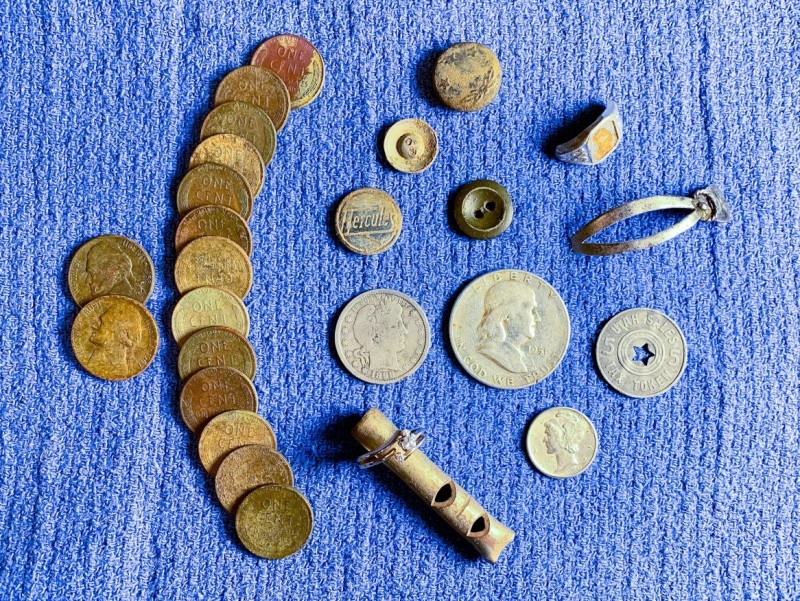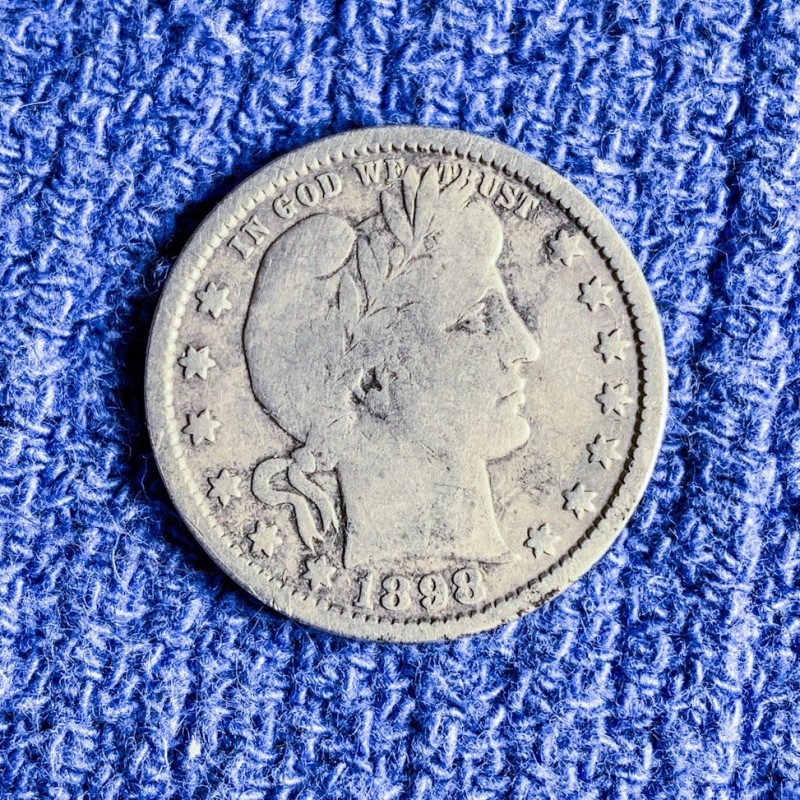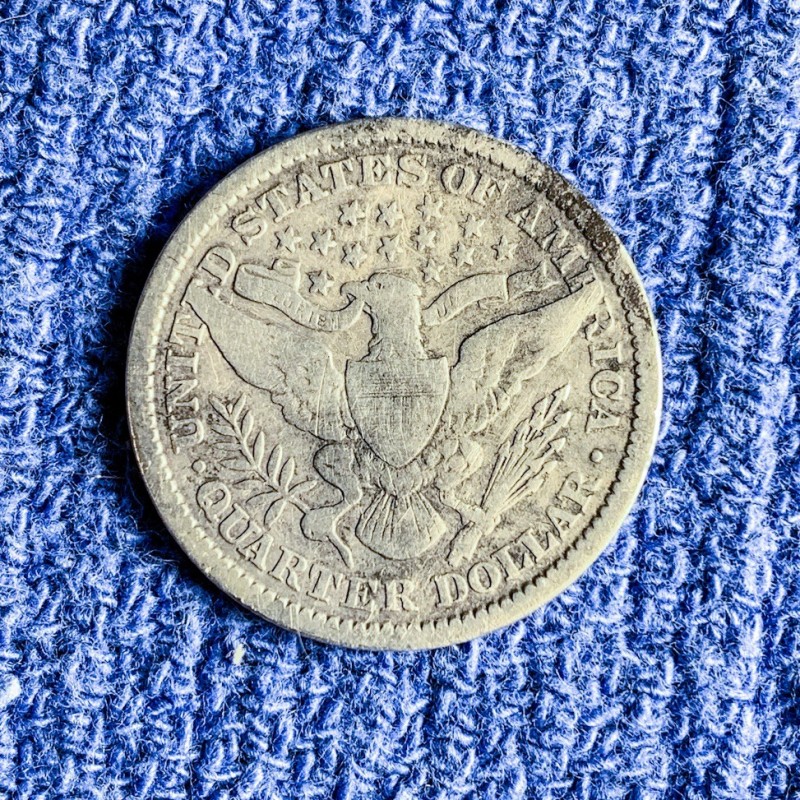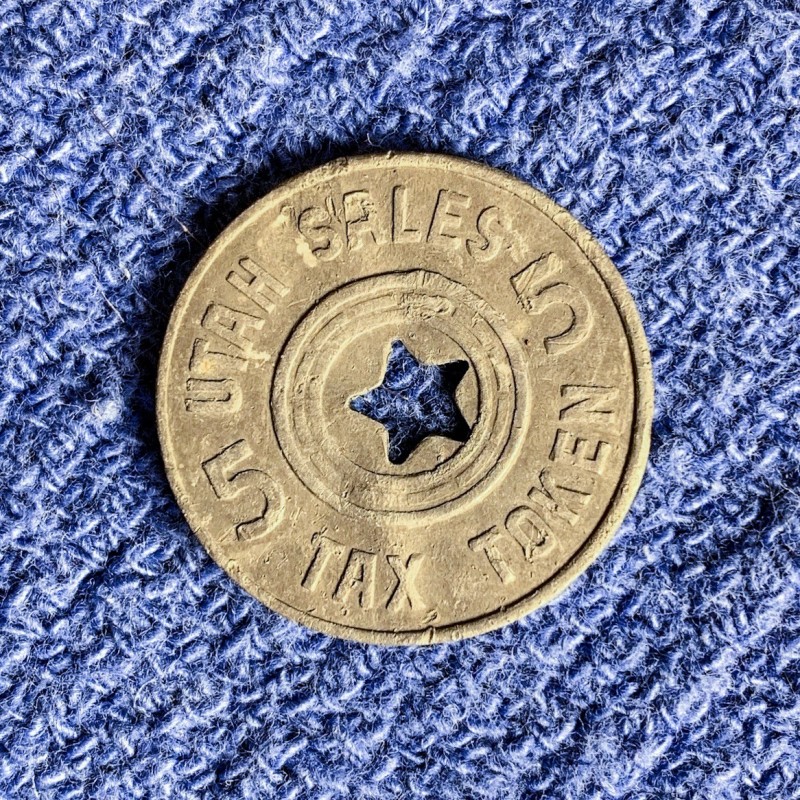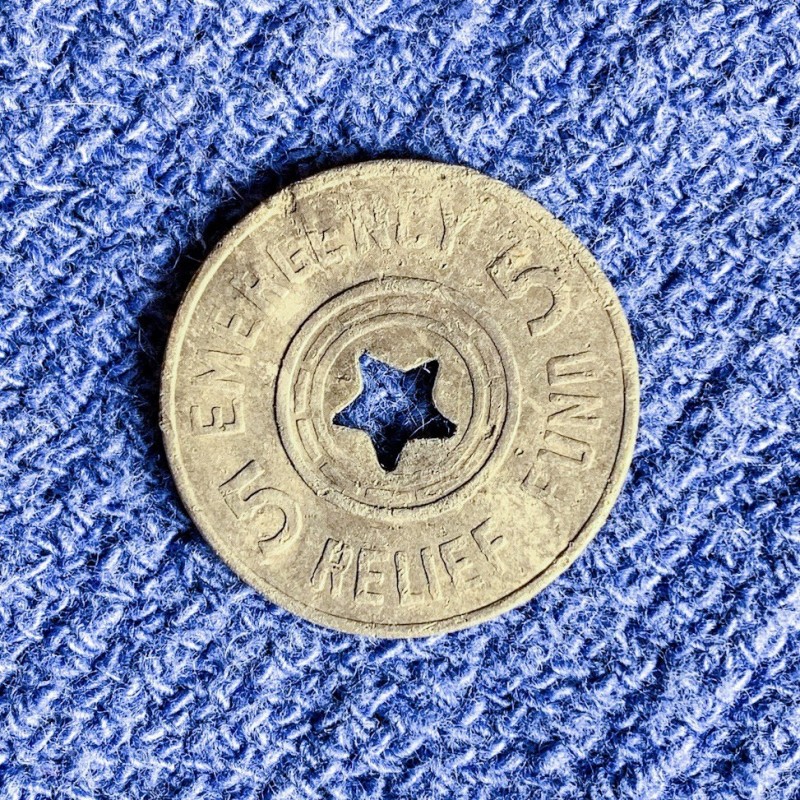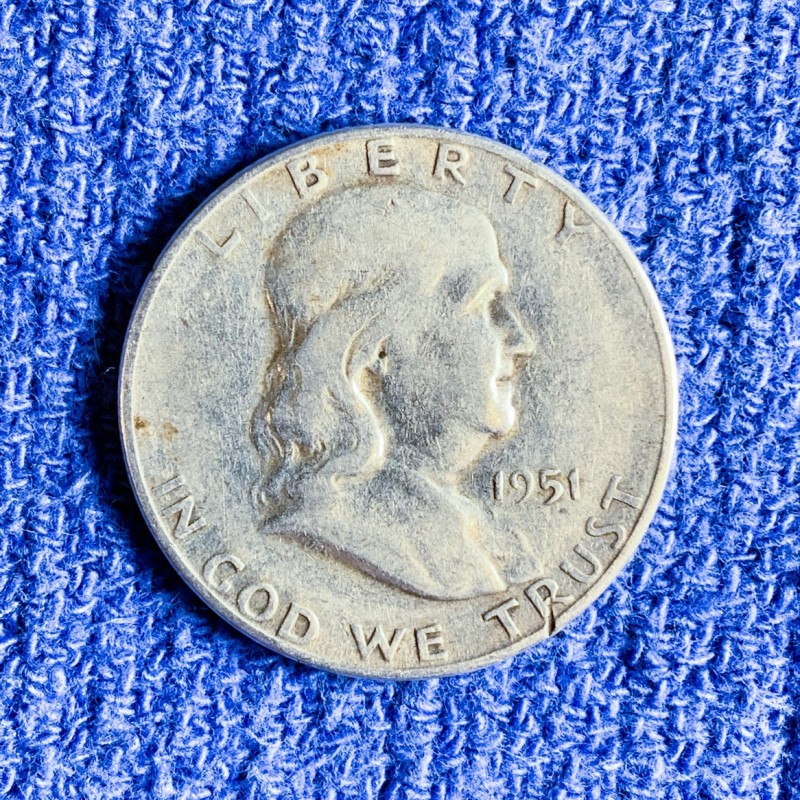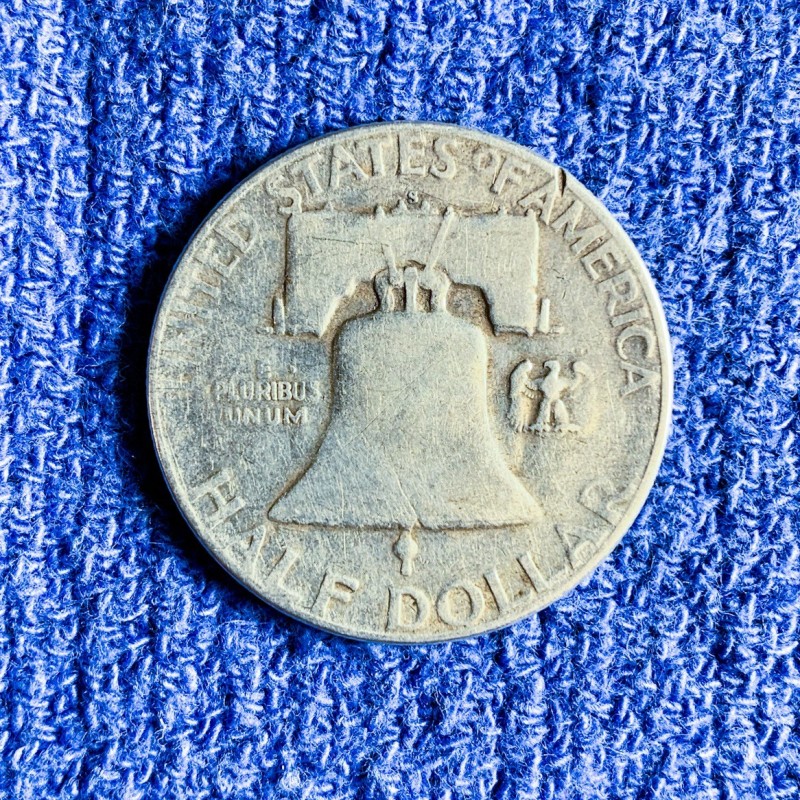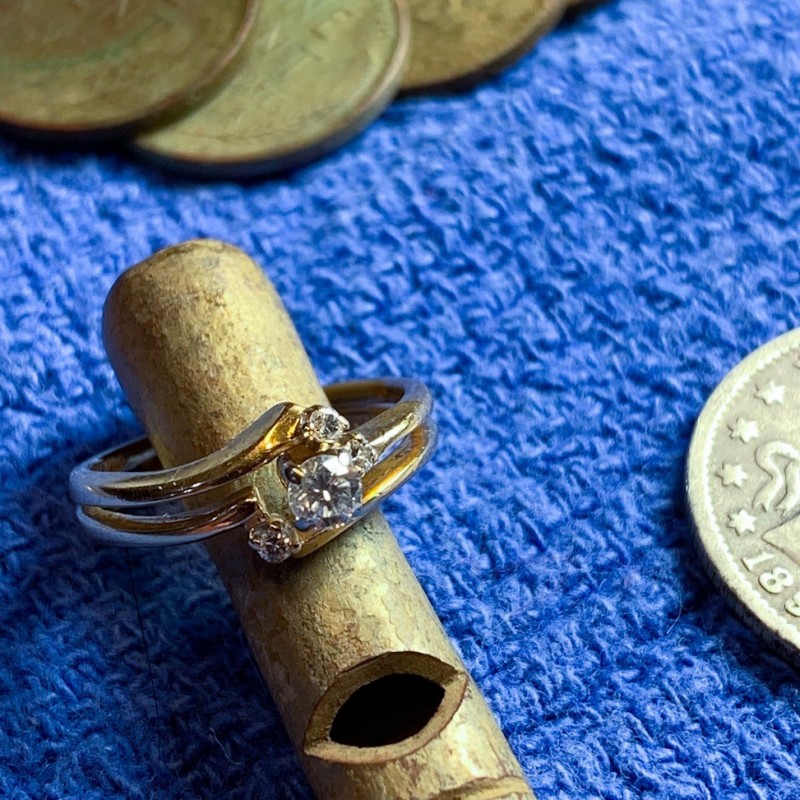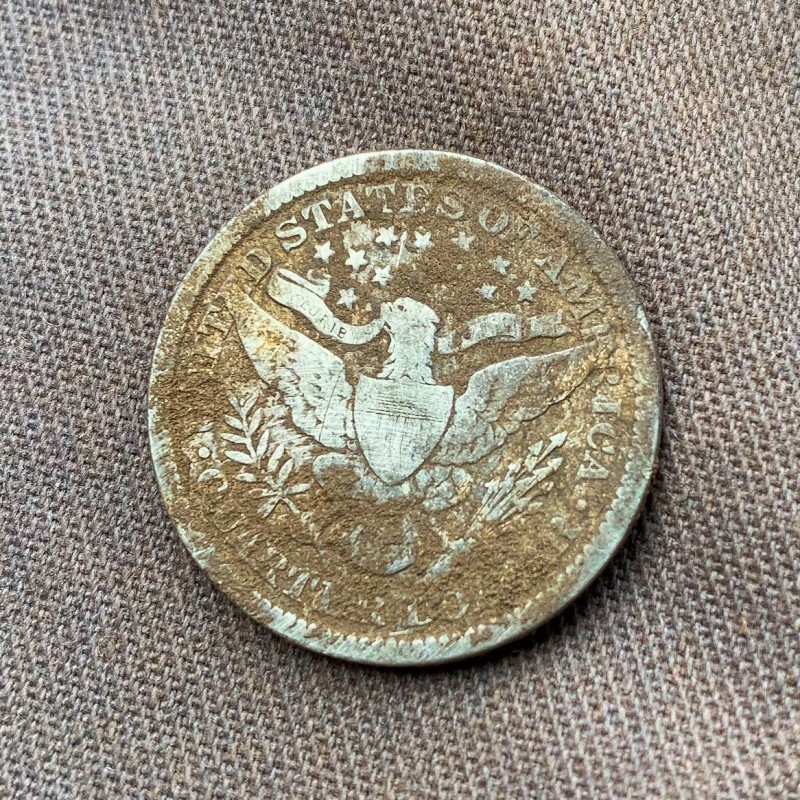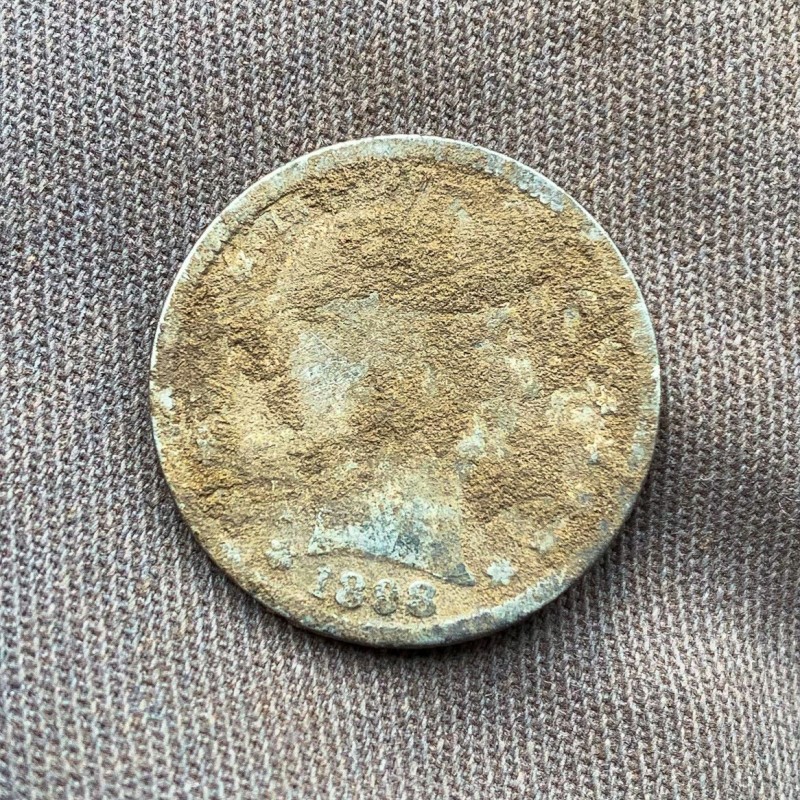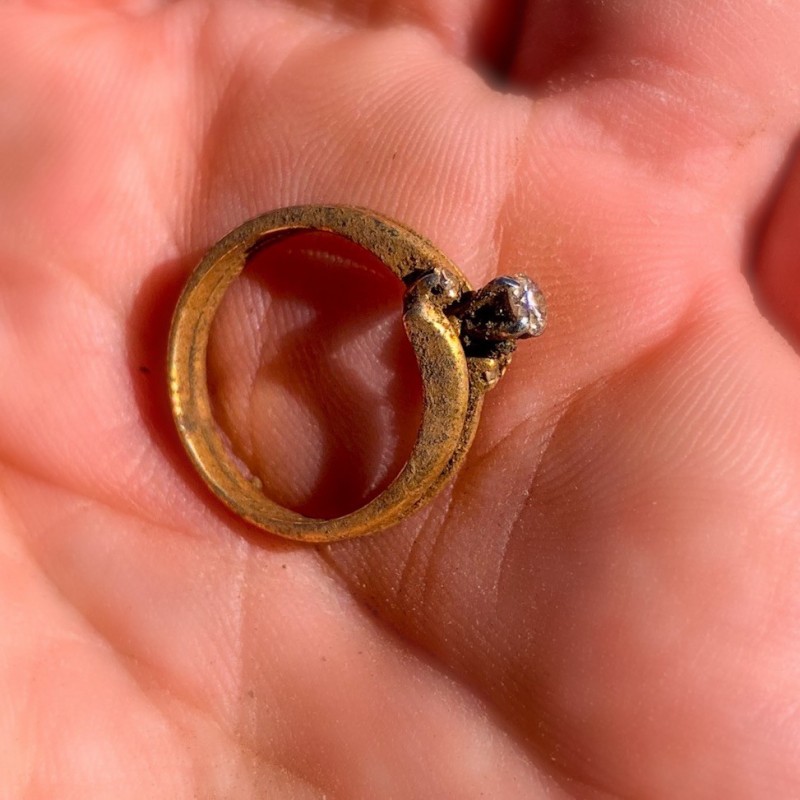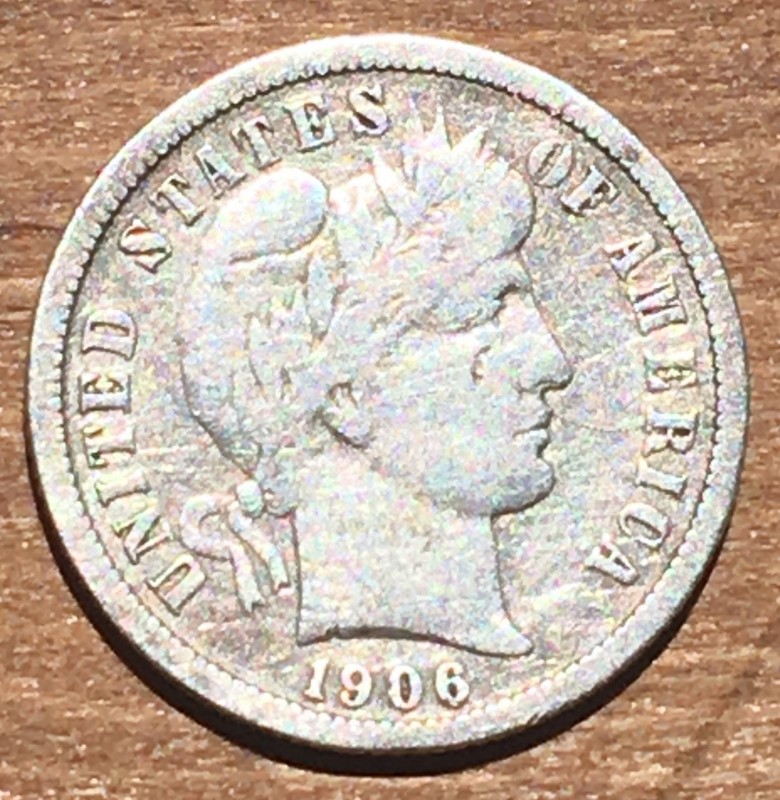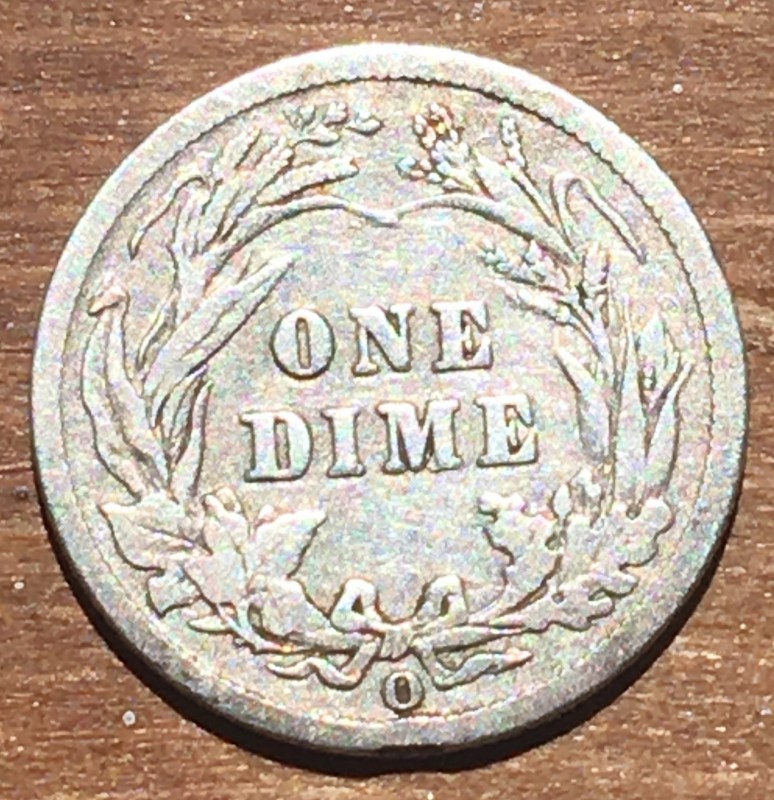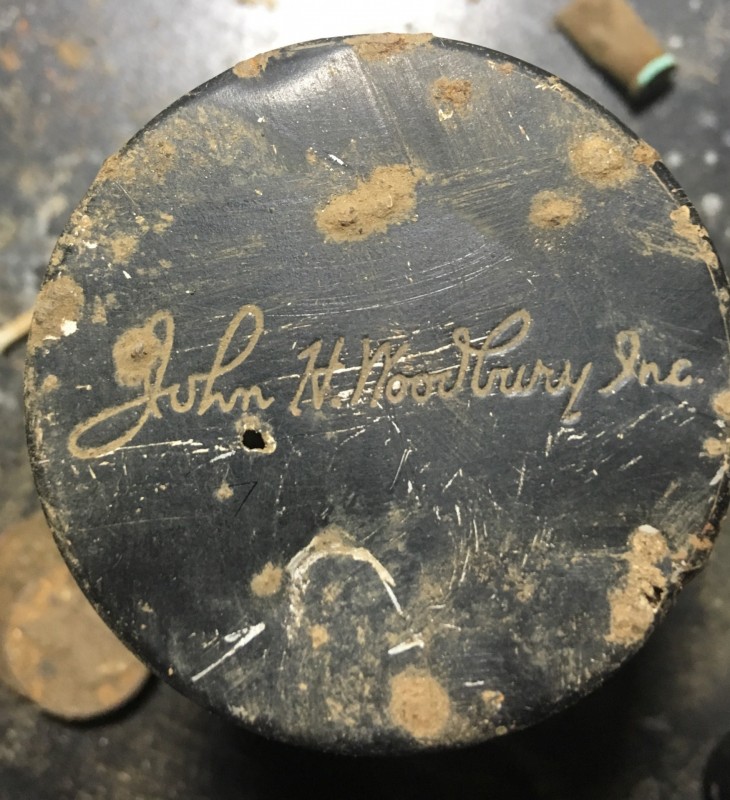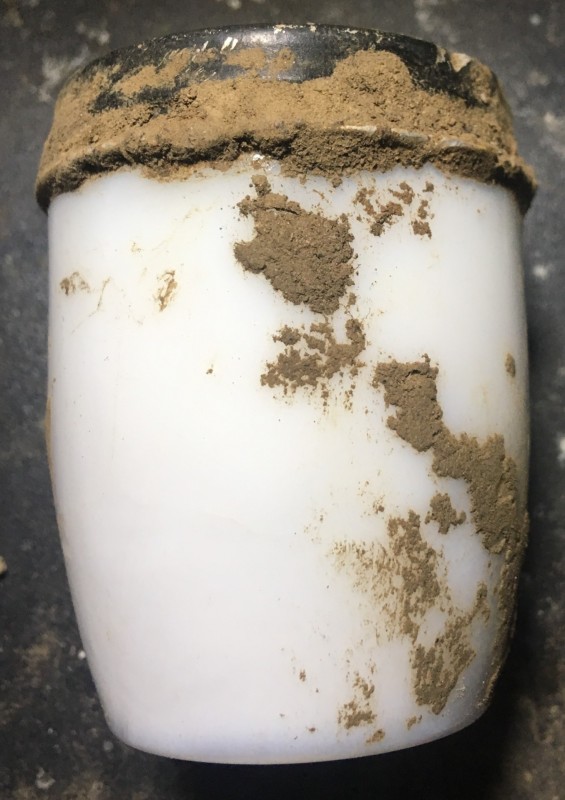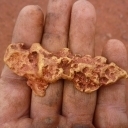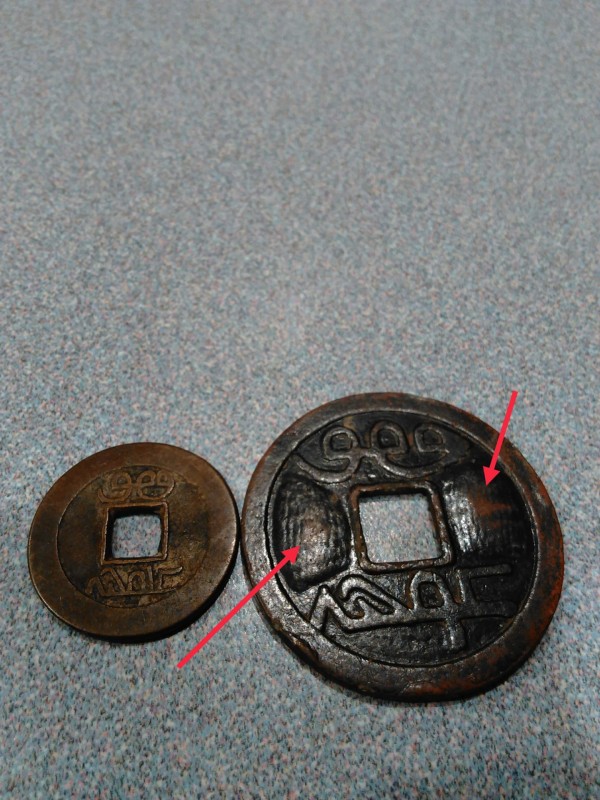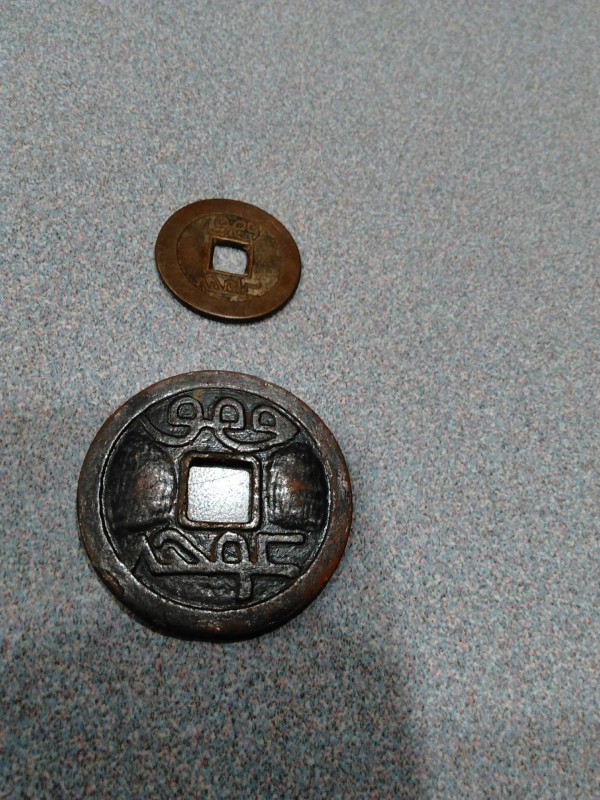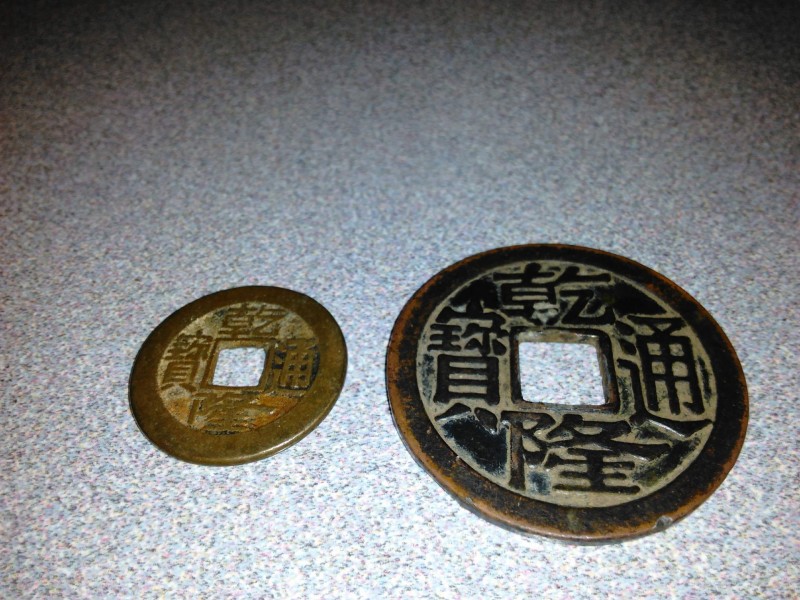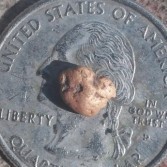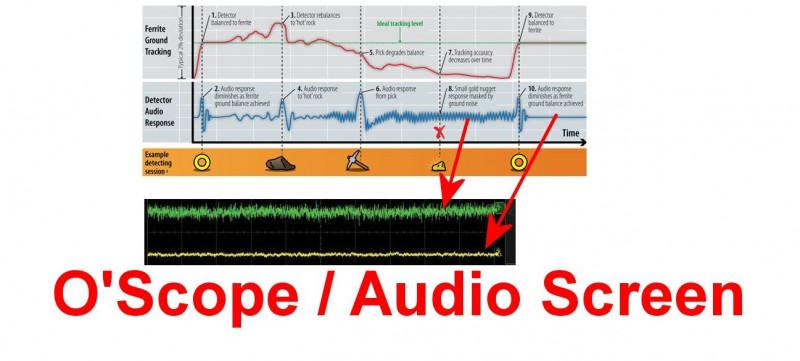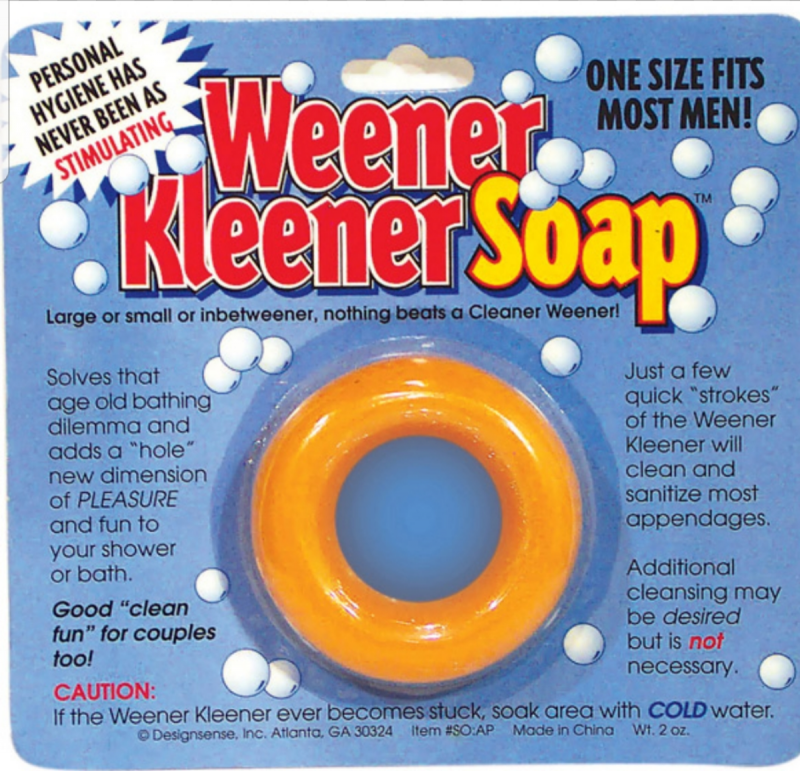Leaderboard
Popular Content
Showing content with the highest reputation on 07/08/2019 in all areas
-
Howdy Rob. A message for your 'on the fence' customers from a previous 7000 owner, only semi-experienced detectorist, very minimally experienced prospector and a person with zero affiliation with anyone person or company. 1) the GPZ 7000 is a very easy detector to set-up and use and is also a very powerful detector. I was a complete novice when I bought mine and found gold with it quickly. If you allow it to be, it is very straight forward. 2) all of this can be as simple or as complex as the end user wishes to make it. Some people want to know the how, why, when and where of how something works - that's the complex bit . If you just want to know how to work the 7000 then that's easy. 3) Turn it on. - noise cancel. - balance with ferrite and Quick Trak in semi auto. - release Quick Track and pump ground balance just off to the side. - check ferrite again. If still making noise over ferrite, balance with ferrite and Quick Trak in semi auto again. Repeat the above steps until quiete over ferrite and ground. - start detecting. - check over the ferrite sporadically through the day or if the detector seems 'out of tune'. 4) With minimal practice this sequence will flow easy. 5) The Ground Mode to choose and the Gold Mode to choose are explained very well in the manual. 6) The default settings are a great place to start and when you get some hours on the machine start to test and play - especially with un-dug targets. 7) The GPZ 7000 is heavy and expensive but also awesome. Comes down to an individual's needs and abilities. 8) The GPZ 7000 won't find gold that isn't there. The best detector in the world doesn't replace research and time on the ground. 9) JP - I've tried to summarise your balancing process in point 3. If it is out of kilter please copy and paste it and fix it up ? 10) If I had the money to buy one and the time to use it I would have a 7000 again in a heart beat. So if you have the time, the money, the location and the physical ability - get off the fence ?9 points
-
... the first of the 49'ers from the eastern US states, Australia, England, and Mexico were now beginning to arrive in the California gold fields. Hopes were high that they would "see the elephant," an allusion to participating in a truly spectacular, life-changing event. The California Gold Rush, from 1849 to 1857, was one of the most significant world-altering events in modern history. While metal detectors have replaced gold pans and rocker boxes, those of us who pursue "the elusive yellow metal" are the brethren of those intrepid 49ers. A post-gold rush ballad states "... and I often grieve and pine... for the days of old... the days of gold... the Days of 49..." I hope you all "see the elephant." HH Jim8 points
-
Thankyou Northeast, what Ive been saying can seem confusing because I am being asked VERY detailed questions and then trying to give VERY detailed replies. Like I said previously it should take 20 seconds from the machine switching on till your moving off to find your fortune. In our shop we call it the E F G approach, alphabetical so it is easy to remember the order. E for EMI F for Ferrite Balance G for Ground Balance Hope this helps JP6 points
-
Chet you have blown my mind. AND I think I can intuit (rather than understand), what you are saying. You, Jason, and Andyy are in a realm of your own but it's intriguing to try to decipher. JP probably knows what you are talking about and some other's, but it's rarified air you guys are breathing.5 points
-
I am in full agreement that the GPZ is a great machine to use and fairly easy to learn. The questions we ask are not intended to make the machine seem more difficult to operate or to make us look or feel smarter for asking the direct pointed questions, or to frustrate JP :) The truth is, that the more information we have on how something works, also helps us solve current or future problems that might come up, whether it is some strange coil, setting experimentation, or who knows what. Many terms are used and assumed (sometimes incorrectly) leading to misunderstanding information. I prefer not to assume. And the fact that we have someone like JP on here to explain this stuff, is much appreciated. For example, if the questions were not asked, I would still be using the octopus style ground balancing, which can still end up leaving the machine not ground balance to its full capability. Anyways, I have found this to be a very healthy discussion.4 points
-
My understanding of the how Ground and Ferrite balancing may work??? Soil contains minerals such as iron and other particles that create a somewhat constant Ground signal that can be averaged and fed into the GPZ 7000 mathematical equations as a Ground tracking value. Ground tracking across different up/down distances of unleveled ground is possible as long as the magnetic ground response is linear. Linear meaning that as the coil goes close to the ground and then away from the ground a uniform Ground signal strength change is expected. The GPZ equations know from constant Ground tracking and/or you pumping the coil up and down periodically what kind of linear/uniform Ground signal response it should receive from the ground at different heights. Superparamagnetic particles normally do not have magnetic hysteresis or B curve like a small particle of iron. They do not retain a magnetic charge or north/south alignment like a small iron particle will. They change characteristics as the soil changes temperature. They are easily magnetically saturated. When the soil contains great numbers of these Superparamagnetic particles and they become saturated they generate a non-linear/non-uniform Ground signal that disrupts the GPZ ground tracking and target processing equations. To mitigate this X Signal problem the Ferrite balancing routine is providing a value into the GPZ mathematic equations to handle normal soil X Signal levels. The Ferrite value may be weighted in the different ground modes Normal, Difficult and Severe. The Superparamagnetic particles nearest the overlap of the Transmit and Receiver windings near the center of the coil are the most susceptible to becoming saturated. The Transmit winding is 2 cm above the Receiver windings to increase the distance to the soil and reduce the stronger magnetic lines of force that are close to the transmit coil from saturating these particles. Why is Proper Ferrite and Ground balancing important? The transmit pulse energizes the metal target that causes magnetic currents to generate a short duration magnetic field that is sensed by the receiver coils. The detectable duration of the target return is called the Time Constant of the target. Small gold nuggets have a very short Time Constant as well a weak signal return. Larger nuggets, bullets, nails, and junk have long Time Constants. Soil has a Time Constant that is similar to small nuggets. Small nuggets that have Time Constants that are shorter or longer than soil can be detected. Small nuggets that have the same time constant as soil may not be detected. For small nugget detection it is important that accurate, narrow Ground and X Signal values be maintained. Have a good day, Chet4 points
-
Not too shabby for an Arizona weekend. (We don’t have the old stuff you others have got in the ground.) Three straight days of detecting yields an 1898 Barber Quarter, 1945 Mercury dime, 1951 Franklin 50 cent piece, Utah state tax token, 13 Wheat pennies, some other trinkets, and a 14k gold/platinum setting diamond ring. Not shown here was also a serial number stamped on a plaque from an 1880s sewing machine and a whole pile of other junk. I’m most excited about the Barber and the 50 cent silver. The quarter was about 6-7 inches down and on edge. It sounded good both ways, but swinging inconsistent numbers on the Equinox 800 in Field 1 with the 15 inch coil. I surmise the yard had been cleaned out before even though the owner thought it had not. That was one of it’s only few coins in 8 hours of detecting it—and the yard was massive. Conversely, the Merc., Franklin, and most of the Wheats came from the another small 8’ by 16 ‘ front yard that took only a couple of hours to detect. The diamond ring came from the old school house. Left by someone else unwilling to dig a repeatable number 12 target. Can’t wait to do it again, but going to need some muscle recovery time from all those lunges and precision digging.3 points
-
In layman’s terms Saturation is where the concentrated highly magnetic mineralised pebbles and soils on the surface of the ground throw a field back at the Tx winding causing a small current to pass across the Tx which then manifests as a signal in your ears. You cannot ground balance out Saturation signal, it will always be there no matter what, unless you lower the Sensitivity, change Ground Type mode (EG go from Normal to Difficult) or use a less aggressive Gold mode (EG go from High Yield to General) or worst of all FILTER it OUT by introducing Audio Smoothing. All PI detectors I have ever used Saturate, this is especially so with the new Flat wound coils on GPX machines. All Saturation signals compete with target signals so the operator needs to perfect their swing height manageament to keep the coil right on the cusp between Saturation noise intrusion into the threshold and maximum depth relative to a buried target. Once Saturation noise intrudes the level of noise that is generated adds to the general threshold noise of the detector effectively reducing sensitivity to a buried target (masking in other words). Because the GPZ 7000 runs so quiet (assuming you are using sensible settings) Saturation noise can interfere or reduce sensitivity, a precious commodity gained through the GPZ’s ability to run Zero Stabilizer (Audio Smoothing OFF). If you introduce Audio Smoothing you mask or hide the effects of Saturation and EMI, both of which KILL depth. I think a lot of X coil users are running their detectors this way and are masking or hiding the differences. All X coils that I have used SATURATE much more readily than Minelab coils, more noise equals less performance which is why I was trying so hard to see them improved before they went on sale. JP3 points
-
I agree Northeast. The 7000 is complex in it's make-up but surprisingly simple to use. I was laughing the other day with an acquaintance who was saying that you could screw up almost every setting and find gold with it. Don't be intimidated by the highly technical talk; for the end user there are a few simple steps and if you go over gold you will find it. Obviously you need correct technique - and, yes, a lot depends on that - but it can be learned. I am sure there are others that post here who will agree with Northeast as well.3 points
-
I've read it inside and out, and every post I can find. A lot of stuff seems to conflict to the point I don't feel I can even ask a proper question first anymore until we get some basic defintions of what these things are we are talking about and why/when exactly we need to be using certain tracking modes and the ferrite. The only reason I'm looking more into it and asking is because JP's mentioning all the stuff. Otherwise, I was pretty content just staying in auto tracking and never using the ferrite at all. But lately we were told that we are unobservant operators if we see no need to use the ferrite and we can't tell the ferrite balance is going out. I have not observed Auto ever failing to balance within a second or two on my soils except in a few instances, and in those instance the QT button tracked it back within a few seconds of moving the coil around. I suspect that some of this applies more to hotter soils in Australia than in many places in the US (other than perhaps South and Central AZ). But it would be good to get some clarification on that too if that is the case. That brings up another question I've had - why do we even need to use the ferrite at all if there is little to no ferrite component in our soils? I have 20 or 30 questions right now, but I'm not even sure if they are real questions since I don't have the underlying fundamental defintion of what variables represent to even know if it should be asked or not. For instance - why do I even need to use the ferrite in Auto if the ferrite component is actively tracking?3 points
-
I’m curious to how you all see the mineralization of the soils you detect compared to other locations. Our soil here in central Arizona seems to be fairly mineralized. But, we haven’t been detecting anywhere out of state to let us effectively compare. Here’s a USGS map showing relative iron concentration in US soils. There appears to be heavy iron concentrations in the Pacific Northwest. Does this reflect your experience on the ground? If so, has this affected what you choose to swing? If not, how do you think your soil compares to elsewhere? us iron concentrations.pdf2 points
-
2 points
-
Thanks for explanation Chet, you are speaking my language... Given the superparamagnetism stuff, is there a possibility here that "X" from Minelab actually represents susceptibility and not saturation? Magnetic susceptibility is represented in physics by the Greek letter Chi. Which looks a lot like "X". And it's used in reference to paramagnetic materials far more often than is saturation. That would also (potentially) explain how some salts can throw the X balance off (A question I keep asking over and over), some salts exhibit paramagnetism. So while not saturable in a ferromagnetic sense, I believe some salts can exhibit postive magnetic susceptibility values. Aka "X". Though I have no idea if they exhibit superparamagnetism or not. I hadn't considered paramagnetic effects with salt, only conductive/inductive, I guess it can affect both though in theory. I still have a ton of questions, but it's late.2 points
-
I can't pretend to understand x-ground signals and temperature changes and such, but I can conclusively say from direct experience that Semi-Auto is the way to go in the places where I detect. The change after the update was subtly profound. Recently I have changed the User button to be able to switch to Manual when messing with a target signal. Sometimes I use it and sometimes, when the signal is apparent, I don't. But... I love this discussion.2 points
-
Ebay’s next big seller!! Just remember you saw it here first on DP forum ?2 points
-
Hey Guys, Jasong - Yes, I was in the same area, but not the exact location. In Semi-Auto the unit seems to run smoother from what I noticed vs. Auto mode. I used to always run Auto, but found at times it got noisy even after a ground balance with the Ferrite. JP - No question you are an expert on all this, but I can tell you, it' down right confusing. You wouldn't believe how many emails I have gotten from this thread, asking me if I really understood all this X-balance, G-balance, temperature change, using the Ferrite or NOT, what mode to be in, and should you use the Ferrrite. Most of all the customer have stated, "it don't show any of this in the instructional manual?" I must tell you, the customers that were on fence about buying a GPZ 7000 just jumped back. Reading this for a new customer, or someone thinking about purchasing is way too confusing. I'm real surprised Minelab hasn't clarified any of this. If it wasn't for you, most of us wouldn't have a clue about all this technical stuff.2 points
-
Quick-Trak equals Forced Fast GB on both Ferrite/X Balance and G balance simultaneously, so it is not advised to use Quick-Trak unless the Ferrite is present. In Semi Auto Mode Ferrite/X balance equals Locked Ferrite/X balance but slow tracking G balance, hence why I slowly pump the coil after releasing Quick-Trak and why I continue to pump the coils occasionally during detecting sessions because it is slowly tracking the G balance. In SEMI-AUTO MODE Ferrite/X balance is LOCKED!!! G balance changes often, Ferrite/X balance only changes if any of the following happen, Big temperature change of the electronics when in any mode (Auto, Semi-Auto or Manual), Saturation signal when in Auto Mode, Salt signal when in Auto Mode. When in Semi-Auto Mode Saturation and Salt cannot effect the Ferrite/X balance only the G. When in Manual Mode everything is locked unless Quick-Trak is triggered, however it is strongly advised the Ferrite be present when doing so. I can’t be any clearer on this subject now, hope this makes sense. Remember in SEMI-AUTO MODE the FERRITE balance is LOCKED and can only change if the temperature of the electronics moves or changes a lot. Usually this happens mostly in winter between first start up and about an hour later as the electronics go from dead cold to operating temperature. In SEMI-AUTO MODE ground cannot effect the Ferrite/X balance only the regular G balance. JP2 points
-
Yep...I don’t worry about all this alphabet stuff, I just get out there and do what works for me. But then I might be one of these crap detector operators I’ve been reading about lately. while it’s great having all this knowledge about how the detector works, I’d prefer to master how to work it and I’m getting there by experimenting, testing, swinging the damn thing and experience. Often the more you read about X, G, Y etc..the more confuddled you get, the more self doubt you create and therefore the less success and enjoyment you have.2 points
-
I would really like to hear what JP says too since I'm getting really confused with what exactly X and G entail also, and there seems to be conflicting bits of information all over the place in various posts. From a physics standpoint: saturation should be the point on the magnetization curve where any permeable ferrous or ferrite mineral stops increasing the B field exponentially when an external mag field is applied, ie where all it's domains have already been aligned with the external magnetic field. Therefore, unless I am misunderstanding it, saturation is not a response itself, it just affects the X response as the ferrous or ferrite materials go in an out of saturation as the applied magnetic field from the GPZ changes. For sake of defintion (someone please correct this if not accurate) - ferrous and ferrite materials are natural occuring oxides of iron most commonly for our purposes. AKA - hot ground. But ferrites can be a lot of other things also that we don't encounter as commonly. That being the case, I am struggling to understand how salt affects the X balance and requires one to toss the ferrite down again since there are no ferrous or ferrite components in salt, but this has been said many times over as if it's understood somehow that salt will throw the X balance off. I cannot find a proper definition of what exactly G is tracking and it needs to be defined in order to understand this all I think. I asked a few times in the past... It doesn't appear to be anything scientific specifically that I can find, but something related to detectors so someone with knowledge of detector engineering would need to define it. I don't get if X is only ferrite and G includes non-ferrite permeable materials like magnetites, pyrites, etc. Or if X encompasses all ferrite/ferrous materials and G only includes the conductive response of the ground? Or...?2 points
-
If it were just soldering wires together, I would rate the job as "easy". But this has a cup connector and needs to be soldered in pretty tight quarters. I would give it "intermediate" difficulty. You definitely do not want to rush through it. There are many ways to mess this up.2 points
-
1 point
-
The large coin/token was found at a school. It is the same exact coin as the smaller one that is next to it in the picture, just bigger and a couple bundles of grain, maybe (see red arrows). The small coin is a real Chinese coin that I have at home. Question is, what is the larger one? Anyone have any ideas? A good luck charm came to mind, but I could not find any just like it. Thanks for any help.1 point
-
They didn't have GPS, cell phones, google earth, X coils, trail mix, rain coats, dentists, doctors, or this forum and me to keep them in line. It's a wonder any of them survived much less succeeded. My fathers family came out to Ca. in 1851 from Bangor Maine and started the town of Bangor in Butte county. Thus all the family since has been cursed with the prospecting disease.1 point
-
Great haul, even for a long weekend! In particular you must have been getting baked. Not sure why you're downplaying your finds by saying: unless you're talking to the Brits.? Yes, the East coast has some older stuff but they still have to dig through all the modern coinage (and trash) to find it, and even for them they're a pretty rare find. Thanks for posting such good photos and hope you can make it out again soon.1 point
-
Could you give more detail, strick? Sounds like something I'd like to read.1 point
-
I'm in Northern California and yes, that is my experience up here. Our soil is all over the place, to the point that VLF's can be pretty much useless in certain areas due to mineralization. I ended up getting a PI and the difference was unbelievable. The PI won't see small gold nearly as good as the VLF but at least you're looking for gold and not digging up hot rocks and ghost signals!1 point
-
Just finished reading the Majors book once again...If you could not be there then might as well read about it! must have been nice to walk along and pick up nuggets as big as potatoes with your hands. Could you imagine having a detector back then? strick1 point
-
Do only 2 people own these new Coiltek coils? Even if you don’t have an Xcoil lets hear or see some reviews on these Coiltek ones.1 point
-
I don’t normally offer advice on the net, but I’ve had a long association with the Beechworth area And done quite nicely around the place over the years. For good sized gold, get up to Yac, then smaller coils on the top of hills and on the steeper slopes, save the big coil for the lower flats.1 point
-
We've spent a lot of time here lately on whether to X or whether to CoilTek. We don't know if we should Z or Q. We have so many choices we don't know what to do. Make life simple and get the app: This might be easier. Forget the coils and forget the manufacturer. ? https://play.google.com/store/apps/details?id=com.gamma.metaldetector&hl=en_US1 point
-
I forgot. You know those long handles for selfies and videos? Well, just attach one of those to your phone and swing it down near the ground. It kinda reminds you of an XP, right? Make sure you have a good second case (coil cover) so you don't have to explain to people why it has so many scratches!1 point
-
I thought it made sense too Andy, but... I was literally just typing up a response about an experiment I did to see if it made a little more sense in physical observations, I'll still post it but I apologize in advance for it going kinda off the rails and certainly no one needs to read this to understand their GPZ. "On a mildly tangential note, I decided to do a crude experiment after reading up on superparamagnetism via Chet's post. I have some ferrofluid which will show magnetic interactions well under the field intensitities which something like magnetite will physically saturate. It is also superparagmagnetic, technically speaking. So I put a plastic container full of ferrofluid on top of my GPZ coil expecting to see some kind of minor oscillations or something. But no result. Probably has something to do with the mag field alternating or something with ZVT that I don't understand where things cancel each other out, or maybe the GPZ works off EM radiation and not mag field interactions, I really have no idea. But now I'm wondering how we can even be saturating minerals under the coil at all since the mag field of the TX coil seems to be relatively small, certainly not in the 1+ tesla range. I'm sure I'm mixing something up here with alternating mag fields and EM radiation vs permanent fields and whatnot. But are we even really emitting a mag field powerful enough to saturate ferrous minerals is what I'm wondering? And if not, is the physical definition of saturation not what Minelab is talking about? Further, saturation point implies very little mag field change in the ferrite/ferrous material with increased TX strength, which should be a good thing. Less ground noise. So why do we want to avoid it? Would it be best to just saturate the crap out of the ground since everything past that point generates very little noise? Like the B curve for magnetite is almost flat after saturation even if you quadruple the external mag field, whereas up to that point the saturation effects B exponentially... Just. So. Many. Questions. Some major definitions or pieces of data are missing otherwise this wouldn't be so confusing to me."1 point
-
I've seen you say this often. If this is true, how is salt affecting the ferrite balance? Salt is not a ferrite. Salt is a conductor, like gold. So, will gold and other conductors affect the X balance too if salt does? Also, what I can't wrap my head around is this: 1.) Ferrite is X. 2.) X is in our soils, thus ferrite is also in our soils. 3.) Semi auto tracks to the yellow ferrite presumably because that component isn't in our soils, and we now keep X constant to the ferrite and not our local changing soils. 4.) X continues to change in our soils but our X value in our detector stays steady. IE: not tracking the ferrite in the ground anymore So, how is that not causing noise as the soil's X component changes yet our detector is staying tracked to the ferrite? Why not just keep the detector always configured to the ferrite by adding some kind of offset into the firmware if it needs the ferrite data and not our local X soil data?1 point
-
Why depend on a magnet when you can use a battery powered phone to spot iron? 1.5 inch range too! Modernity. It's fun and so ...modern! What will science come up with next - a phone powered belt?1 point
-
I hope it works out for you, I was out today on a grass field, regularly ploughed and left the GB on 75, didn't engaged tracking and Equinox ran really smoothly, never ran this high before on the GB but was very impressive, plenty of finds with great tones, also recovered plenty of small targets, i.e. Air gun pellets and shotgun percussion caps, so convinced its not tracking out the small stuff!... only used recovery speed 6/7 ,,, not that interested in depth, target separation is more important to me! Good luck!1 point
-
Oh dear, now I need a thermometer??? Jonathan, what temp, how much change? I don’t think I knew about this...or my little brain leaked.... fred1 point
-
Sorry about the abbreviations--I hear others calling them as such and do it myself without thinking. Not on Geotech here wherein I would be the one asking for clarification.... cjc1 point
-
Good Thread Everyone, I have been experimenting with different settings, and ferrites. I have a different ferrite that falls within Minelabs GPZ 7000 specs, that seems to be working pretty good. Also, would be cool to incorporate an audio / O'scope screen option, to see when you need rebalance... I know semi pretty much does that when properly balanced to ferrite and ground, but I noticed you still need to constantly rebalance due to varying conditions, EMI, soil type, ect.. P.S. I tried this new ferrite Ring, but it didnt work to well...1 point
-
You’re going have a hard time rotating the shaft being it’s square. The locks on the shaft is not twist lock being the shaft is not round but a tab you push to lock on a flat surface. Chuck1 point
-
5 ounces in 2 months ain’t really that bad tho..... Maybe you can get more next trip?1 point
-
AussieDigs by the looks of that area (photos) you are in I would be trying some of that flatter ground on the top of those hills if there is any indication of old timers working. The nuggets have not been given the down hill assistant of running away and should be closer to the coil than gullies.1 point
-
If you want to make a backup/replacement One-wire ID chip for the coil here is what you will need. The video explains the process rather well. It will require that you shave off enough plastic on the 7 pin plug to read the chip number. https://www.youtube.com/watch?v=r2T78o7oxfQ&t=9s https://www.ebay.com/itm/Serial-EEPROM-FLASH-PROGRAMMER-1-5-5V-ICSP-USB-24x-25x-93x-95x/301984133071?hash=item464fa82fcf:g:acAAAOSwjVVVp-Gd https://www.digikey.com/products/en/integrated-circuits-ics/interface-specialized/754?k=one-wire Have a good day, Chet1 point
-
And of further relevance, here is the Wiki post on the legality of decompilation of software even in the event Minelab didn't use open source and 100% of their firmware was their own creation under exclusive license. https://en.wikipedia.org/wiki/Decompiler#Legality Note the specific case they reference is one company decompiling another company's software locking mechanism. Almost exactly what is happening here. And the US case ruled that was legal. Seems to me there is a stronger case to make for the legality of circumventing the chip through software for a need of interoperability, than hardware. At least in the US or Europe, when it comes to laws and court precedents. A 3rd party company could definitely make this case in the US anyways.1 point
-
I wouldn't be so sure Simon, I decided to look further into it and chase down an official Minelab EULA (those things we mindlessly click "ok" on when installing a new piece of software, for those less computer saavy amongst us) in order to figure out what sort of copywriting was involved and wether they sourced libraries or open source code that users have every right to edit. And I found this: https://www.minelab.com/opensource So, they might be using open source already to create their firmware in some form another. Or on second thought it could be the XChange software, or who knows. However, the GPZ 7000 link doesn't work for me. In fact their entire site is blocking every IP from my ISP for some reason so I can't actually open any link anywhere from Minelab right now. *note to Minelab: The link needs fixed, it's a part of the agreement for the code you have reused. But another thing I wanted to mention given the obvious fact the GPZ is manufactured in Asia - my buddy used to work in the video game industry and they would hire out a ton of programming from Asia and India, none of which they could enforce copywrite on for reasons that were never really explained to me. I'm not sure we know Minelab themselves even wrote all the firmware anyways, it could have been written in Asia without copywrite (or under GPL or similar), or if they only wrote parts then maybe some are editable. For instance, they may have used directly the library code right from the security chip manufacturer. And library code is generally covered under open source EULA's which mean it is editable. There is nothing wrong with talking about this stuff and figuring out what is right and wrong. Minelab watches these forums, they are welcome to let us know if we've misinterpreted something themselves too.1 point
-
It’s not that hard a job, making the patch lead. Just take your time and follow the instructions to the letter. A mate and I made mine today, took our time and double checked everything. Fingers crossed after reading this thread but she fired up beautifully, balanced nicely and pings .20g bits easily. Not bad for a 17 x 12 Spiral. One tip, some solders melt at high temperatures, we had both but used the lower temp one, made life easier.1 point
-
I'm a little disappointed in the lack of West Coast Beach Hunter finds. I see the whole coast line getting slammed with storm after storm and high winds. Is this not the PRIME TIME to be out there swinging exposed layers of gravels and hard-pan? I know there has to be crusty black discs (silver coins) and the gimmer of gold beneath the coil. Show us you mighty few & faithful... as we inlanders are snowed in and football season is over. I know there has to be a select handful of hardcore detector abusers out there willing to brave the sharks. I've got me new CA style cowboy boots on and Equinox packed ready to go if the invite comes?1 point
-
Gerry A friend just ask if that was me and I told him yes . I told him I knew the horse was sick because it was throwing up too . Chuck1 point
-
The guy who makes the coils is in my opinion a decent person, he has never once asked me to remark or promote favourably on the coils. He has not once questioned or interrogated me on any of my comments here on the forum, and I’m pretty sure he has been well appraised of proceedings. In my opinion he is extremely honorable. He seems to be a passionate detectorist and has shown me some impressive gold during our conversations and I’d say he originally started making the coils as a hobby and local demand soon took over. I’d also say he’s reached out to the wider community to try to connect up with Minelab users around the globe, especially here in Australia in Minelabs home ground, because he feels he’s created something of merit and wants to expose what’s hes done to a wider community. I’m pretty sure Money is not his main motivator. So then you must ask yourself the question why I’ve been so voiciferous on the subject? There are a blend of issues going on here which has been well documented, some of which I do not need to go through again. However the main key issues were: The coils are electronically inferior to the standards set by Minelab when they established the design parameters of the coils for the GPZ, I’ve used those same testing techniques when I’ve tested the X coils and gave feedback accordingly. This is FACT and NOT agenda driven. Secondly there is the major issue I have with the circumvention of Minelabs IP. So as Steve has mentioned the coils are highly experimental, so buyer and user be aware, the subject is highly emotive because there are obviously some issues with a lack of clarity around the subject, largely in part due to the language barrier and what I feel is a lack of upfront information provided by others. Then there are my own personal standards around integrity and being honest and upfront, call it duty if you like but I can’t just stand by on this subject when I was instrumental in bringing about the confidence to market them in Australia in the first place in a misguided attempt to access the much needed IP permissions and accordingly the big need for electronic improvements. So are the coils any good? Absolutely, my first impressions have been quoted elsewhere around the net and I stand by them. I was pleasantly surprised they worked so well. So what does ‘GOOD’ actually mean? It means the ones I used did not cause any damage to my detector, that they generally worked OK and found nuggets and one coil in particular found gold on a flogged training patch which impressed me. In summary the standard wound coils in ground that is not too extreme will provide an advantage thanks to size differences. They will be also be slightly more sensitive because the housing is thinnner thereby bringing the Tx and Rx closer to the ground compared to the thickness of the Minelab coils but that will also exacerbate other issues like saturation etc. They will be easier to use thanks to weight savings which could also equate to better performance due to better coil control and longer detecting hours. You would be amazed how much of a boost a positive outlook will provide to a person going back to an old spot with something new. The Spiral wound coils do seem to provide a sharper signal response but I would only recommend them in quieter soils (non variable soils like in the Pilbara and Kimberly regions of WA or areas that Normal can be used), I’m not certain how many spirals are actually being used in Australia but in a lot of ground they will be problematic. The Spiral wound coils were the only ones that provided a like for like performance difference in my opinion during the testing I did, the others were just down to coil size and shape. Coil weight, size and shape are more than enough reasons to justify the X coils because they are seriously lacking with the GPZ, in a lot of ways Minelab have brought this problem onto themselves for not addressing this HUGE need in a way that is palatable for the faithful end user. The ball is now right in Minelab’s court about how they proceed going forward, I don’t have a crystal ball so have no idea how this is going to play out. It’s seems I’m in a “damned if I do” and “damned if I don’t” situation, I had to choose between getting vilified by people not wanting to hear the truth or getting vilified by my own conscience and end users when they found out I was in possession of the truth, right now going bush prospecting is extremely tantalising. JP1 point
-
It's a shame the Gold Kruzer is not getting more press. It is one heck of a value proposition at $749 with two coils (a DD and a concentric!), submersible, and included wireless headphone system. The main thing I like about the Gold Kruzer is the sounds are very much like my old Gold Bug 2 - nice solid true threshold based all metal mode on this one. And yet you have full target id and discrimination options for general purpose detecting.1 point
-
1 point





